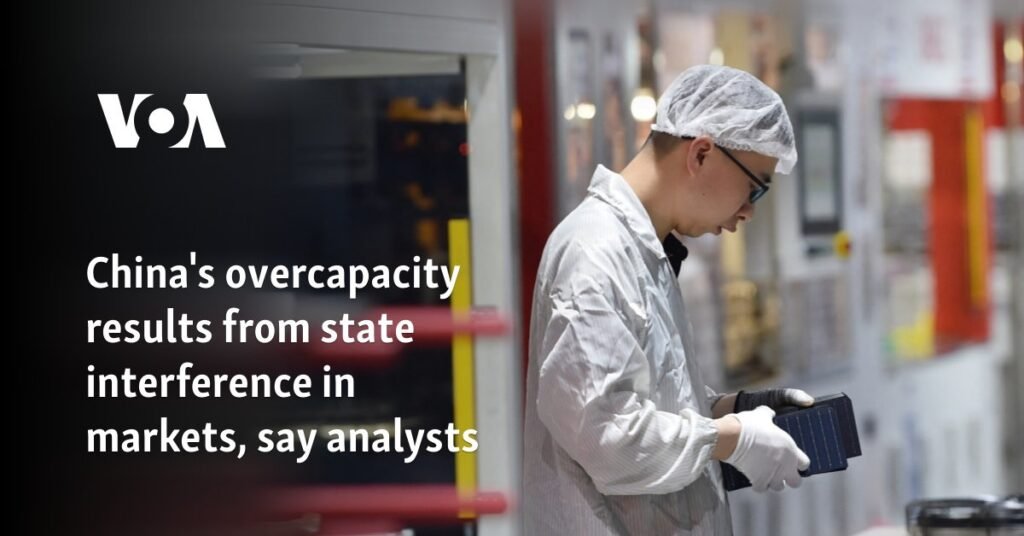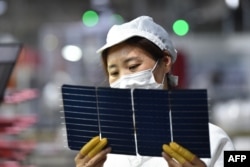U.S. Treasury Secretary Janet Yellen is on a five-day visit to China and on Friday expressed concerns to Chinese authorities about state subsidies that encourage overproduction in industries such as electric vehicles, solar panels and semiconductors. did.
U.S. officials and economists have argued that China’s overcapacity (when production capacity significantly exceeds what is required by the market) is a problem, especially if China tries to cover the excess production through exports rather than domestic consumption. , warns that it will further drive down prices and eliminate jobs.
US President Joe Biden said in a phone call with Chinese President Xi Jinping on Tuesday that China’s “unfair” trade policies and “non-market” practices are hurting the interests of American workers and their families. Stated.
According to the Chinese government, Chinese Foreign Ministry Spokesperson Wang Wenbin briefed reporters at a regular press conference on Wednesday about the talks between the two leaders on trade. “The United States has adopted a series of measures to curb China’s trade and technological development, and is adding more and more Chinese companies to its sanctions list. This is not ‘reducing risk’ but creating risk,” he said. Stated.
So when does an industry reach overcapacity?
Gary Clyde Hufbauer, a senior fellow at the Peterson Institute for International Economics, said that in capital-intensive industries such as steel, oil refining and semiconductors, when capacity utilization drops below 75% for extended periods, most observers believe that He said that he would be labeled as such. Overcapacity.
Hufbauer told VOA that nearly all of the country’s capital-intensive manufacturing industries have overcapacity as a result of China’s huge investments in government stimulus and bank loans.
“If China pursues the ‘solution’ of large-scale exports, manufacturing in Japan, the EU, South Korea and other developed countries will suffer. But low prices will also hurt manufacturing in many parts of Latin America, Africa and Asia. “It will be welcomed in developing countries.” .
Utilization of China’s silicon wafer production capacity has fallen from 78% in 2019 to 57% in 2022, according to a report last week from New York-based Rhodium Group, which tracks the Chinese market. In 2022, China’s lithium-ion battery production will reach 1.9 times the domestic installed capacity, and the issue of excess equipment in the clean energy field has become apparent.
China’s exports of electric vehicles, solar cells, and lithium batteries further increased significantly. According to the data, in 2023, China’s electric vehicle export volume will be seven times that of 2019, and solar cell export volume will be five times that of 2018, an increase of 40% from 2022.
The report notes that while temporary overcapacity may be harmless and a normal part of market cycles, it becomes problematic when it becomes permanent through government intervention.
China’s National People’s Congress in March focused on industrial policies that benefited high-tech industries, but provided little financial support for household consumption, according to a Rhodium Group report.
“This policy mix will further exacerbate the growing imbalance between domestic demand and supply,” the report said. “A systematic bias in supporting producers rather than households and consumers allows Chinese companies to expand production despite low profit margins without the fear of bankruptcy that constrains companies in market economies. .”
Overcapacity 10 years ago
China’s structural overcapacity problem is not a new phenomenon. According to a Rhodium Group report, the last time China had a large-scale overcapacity problem was from 2014 to 2016, when the government responded to the global financial crisis that began in 2008 with a large-scale overcapacity problem. This was several years after the economic stimulus package was introduced. The stimulus package focused on infrastructure and real estate. Construction will begin, triggering large-scale capacity increases in various related industries.
In 2014, demand for real estate and infrastructure construction weakened, and there was clear excess production capacity for heavy industrial products such as steel and aluminum.
“Ultimately, China’s excess capacity is due to state intervention in the market,” said Derek Scissors, a senior fellow at the American Enterprise Institute. “Purely private actors cannot maintain surplus production capacity for long periods of time because they incur losses. However, state support for the production of some goods and services can be called “strategic,” etc. It allows businesses to survive despite these losses.”
Scissors said China’s overcapacity in new energy sectors such as electric vehicles, solar panels and batteries is a concern for the Biden administration, which wants to expand these sectors in the United States.
“The United States has expressed concerns about China’s overcapacity for years,” he told VOA. “What has changed is that America’s new industrial policy is colliding with China’s long-standing and prevailing industrial policy.”
The surge in China’s exports of new energy products over the past few years could be devastating for market-constrained producers in developed countries such as the United States, according to a Rhodium Group report.
The Chinese government’s policy plans will further exacerbate the growing imbalance between domestic demand and supply, putting China on the path to trade conflicts with the rest of the world, the paper said.
Adrianna Zhang contributed to this report.


